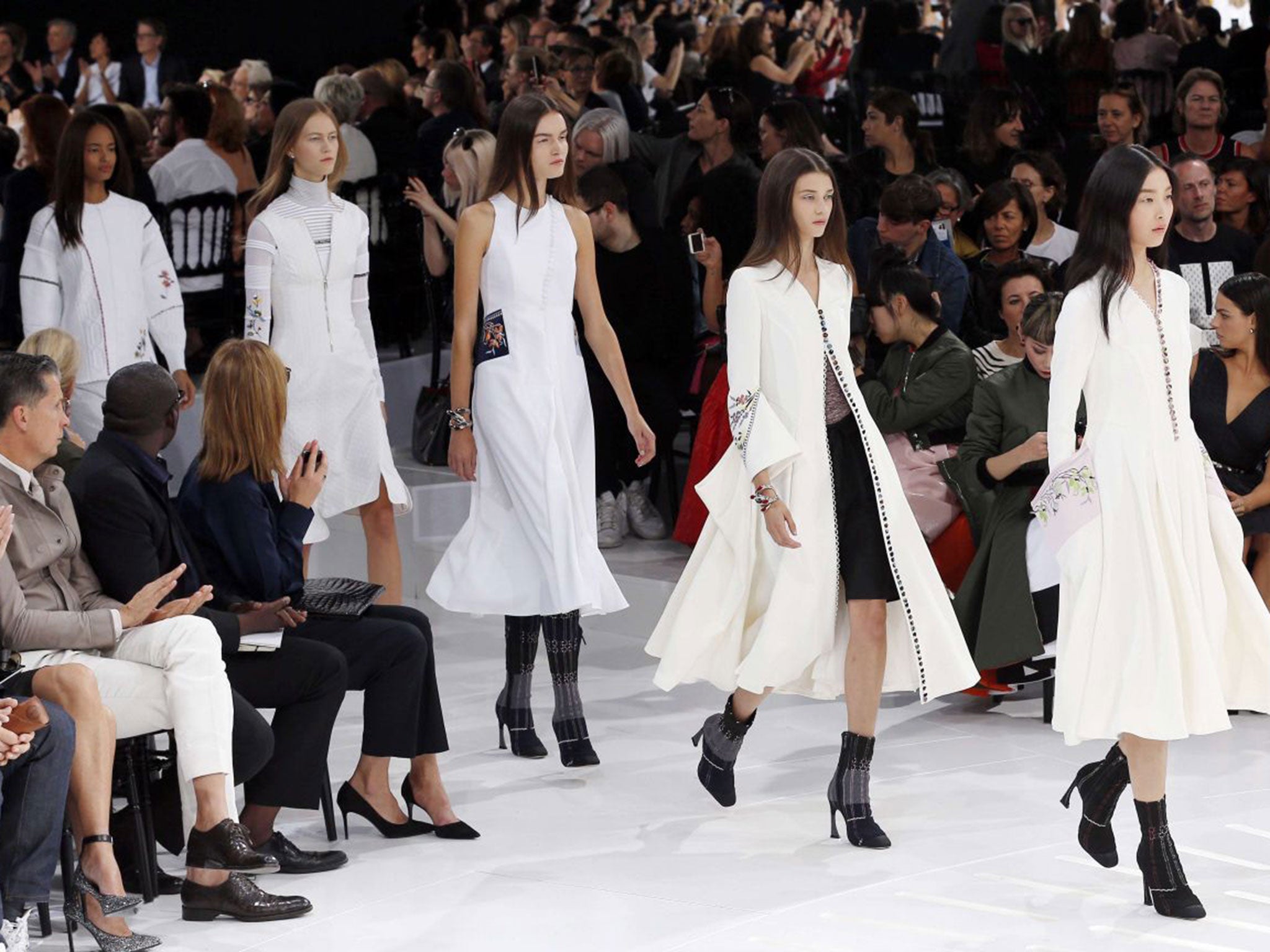Paris Fashion Week 2014: Back to the future as labels bank on the appeal of time travel
Clothes can still propose new ways of dressing, and new ideas of beauty

Thinking back or looking forward. Those are the opposing poles of contemporary fashion and nowhere are they juxtaposed with greater contrast than in Paris. Perhaps that's because the city attracts a depth and breadth of talent unequalled elsewhere. Maybe it's because the city itself is a bit like living inside a history book, and for many designers it can be like working inside one. There are so many age-old labels kept vibrant by fresh transfusions of young talent. In the past 48 hours alone there was the debut of David Koma for Mugler and J W Anderson for Loewe. On Monday, Julie de Libran – formerly Marc Jacobs's right-hand woman at Louis Vuitton – will present her first collection for the venerable Sonia Rykiel label. Next season, Nadège Vanhee-Cybulski begins her tenure at Hermès, just shy of the brand's 180th birthday.
The problem with that approach is that frequently designers can feel burdened with the history of the houses they are ensconced within. That was, perhaps, the stumbling block for David Koma at Thierry Mugler. On paper, the match is made in heaven. Koma has referenced Mugler repeatedly in his own work: the cinched-in, souped-up silhouettes, the futuristic tendencies and the faceted metal adornments. Then again, so have many other designers.
The label – owned by Clarins, which manufactures Mugler's phenomenally successful perfume Angel – was originally resurrected with Nicola Formichetti at the helm in 2011. He made a splash with high-impact but low-selling stunts such as fleshy latex dresses, skyscraper shoulders and Lady Gaga in towering platforms. Koma's Mugler was more muted, maybe with an eye on sales for the future. But when you're trying to tap an identity that's been as thoroughly mined as Mugler's, you wonder how much mileage is left in that.
The alternative? A house with no history. Or no history anyone knows of, at least. That's the challenge J W Anderson is facing at Loewe, where part of his remit is to define what the house can stand for in a contemporary marketplace. He's confident, sure – he has ripped apart existing Loewe shops and even reworked the logo with Parisian design consultancy M/M.
He's rebuilding the house from ground up. Prior to his first catwalk show for the label on Friday morning, he had been identifying and reissuing key items from the house's back catalogue. Stuff most of us will have no recollection of, such as squidgy beanbags (from 2001), travel clocks (1984) or suitcases (1940). That's clever: Anderson is inventing a past for Loewe, or rather editing it to fit with what he sees as the label's future. His first collection felt perhaps like a prelude to what he's about to do – a work in progress, like the tattered dresses seemingly constructed from scraps yanked off the Loewe workroom floor in the house's signature suede.
Past and future were at play elsewhere in Paris. Raf Simons's Dior collection was the most obvious example, where, say, a rococo embroidery detail was set into a slick sheath dress, fragments of Spitalfields silk hemming white pique trousers with a hint of sci-fi. Simons called it a "remix" and said he was trying to make historical costume look modern, rather than simply rehashing recent decades' outputs. The panniers and engageante cuffs of the 1770s are probably a harder sell than the flares and fringe of the 1970s, the rest of fashion's current retro obsession. But for me, this show referenced Christian Dior's New Look of 1947 – which wasn't so new, composed as it was of clothes inspired by the belle époque heyday of Dior's mother and constructed using methods from the 19th century. The past, reinvented in the present, looking to the future. That felt new.
The same approach was evident elsewhere in Paris, but, like Chinese whispers, there was always something distorted in the retelling. By avoiding retro pastiche, designers pushed reference through to something different. Junya Watanabe riffed on space age – Plexiglass helmets, brief shifts constructed of random assemblages of abstract shapes in high-shine patent. Those were also redolent of Sixties retro-futurism, the brave new worlds imagined by Paco Rabanne and André Courrèges. But this reiteration made them feel fresh. And Yohji Yamamoto drew on the Twenties, their bias-cutting and the suspenders tight against the pale thighs of Marlene Dietrich in The Blue Angel, in a strong show of intelligent seduction and perversion. Sex, even kink, without the schlock of shock.
We're always searching for new looks in fashion. Not necessarily a New Look – that Dior collection knocked fashion of its course and changed the way the world dressed. Given how fractured style is today, it's unlikely we'll ever see it again. Nevertheless, clothes can still propose new ways of dressing, and new ideas of beauty. Plenty of designers in Paris did that. They compelled you to look again, anew.
Subscribe to Independent Premium to bookmark this article
Want to bookmark your favourite articles and stories to read or reference later? Start your Independent Premium subscription today.

Join our commenting forum
Join thought-provoking conversations, follow other Independent readers and see their replies